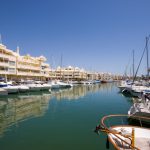Last updated on September 13th, 2019 at 09:10 am.
Most people have heard of Gaudi. It’s one of those names, like Picasso or Dali, that if you know nothing about art or architecture you still have a chance of recognising. If you are visiting Barcelona, there is no doubt that you should pencil into your itinerary at least one of the buildings that he is renowned for designing. You’ve plenty to choose from.
The Sagrada Familia is perhaps his most famous building, and it’s not even finished. Be prepared to get there early and be ready for a long queue if you want to see inside. It is a truly amazing building that justifies the high number of visitors who explore it every year.
Park Güell and the buildings around it perhaps resemble a magical forest. It has a fairytale feel to it of witches, mythical creatures and enchantment. Gaudi’s old home is in the grounds of the park and is now a small museum. The gatehouse to the park is exactly how I would imagine the witch’s house in Hansel and Gretel might look.
Casa Batlló is another fantastical creation. Using wave shapes, mosaics and coloured glass, Gaudi designed a unique building that brought colour and vibrancy to the rather sombre one it replaced. Undulating shapes, a roof resembling a dragon’s back, Gaudi was truly allowed to let his imagination run wild.
The Gaudi architecture is very distinctive. Full of examples from the natural world, you can see the bone structure, skin and features of animals and plants in many of his designs. Once you have seen a couple of his creations you should be able to spot others, and those who have imitated his style, with ease.
The Gaudi Story
Antoni Gaudi was born in 1852 in Tarragona. He was the youngest of five children and suffered from ill health. In spite of this, he still outlived all his brothers and sisters. Plagued by rheumatism, he became a vegetarian and practised periods of fasting. He never married following a rejected proposal and he led an increasingly austere life.
He studied architecture at the Llotja school and the Barcelona Higher School of Architecture and worked as a draughtsman to pay for his studies. At the Paris World Fair, Gaudi’s work was spotted and admired by the Catalan industrialist Eusebi Güell. Güell went on to commission a number of buildings from Gaudi, including the famous Park Güell.
Gaudi’s final and most famous project was the Church of the Holy Family in Barcelona or La Sagrada Familia. He devoted himself to the project which still remains uncompleted. As a deeply religious man, the design and construction of the church became his passion.
As Gaudi’s reputation grew, he employed an increasingly large team to work on his projects. Although he travelled to the sites of different projects, he was based in Barcelona, living in different accommodation until he settled in his own house by the Park Güell where he lived until 1925. He moved, shortly before his death to live in the workshop of the Sagrada Familia.
Gaudi suffered quite an unusual death. In June 1926 he was taking a daily walk when he was struck by a tram. He was unconscious and due to his unkempt appearance and lack of identity documents he was taken to be a beggar. As a result he was probably not given the care he would have received had his true identity been known.
He was eventually recognised by the chaplain of the Sagrada Familia. Gaudi died a few days later at the age of 74, in the end a tragic and probably unnecessary death that touched the heart of Barcelona.
For more information
The Barcelona Tourist Guide:
http://www.barcelona-tourist-guide.com/en/gaudi/barcelona-gaudi.html
Casa Batlló and other information about Gaudi:
No comments yet
There are no comments on this post yet.




Leave a comment